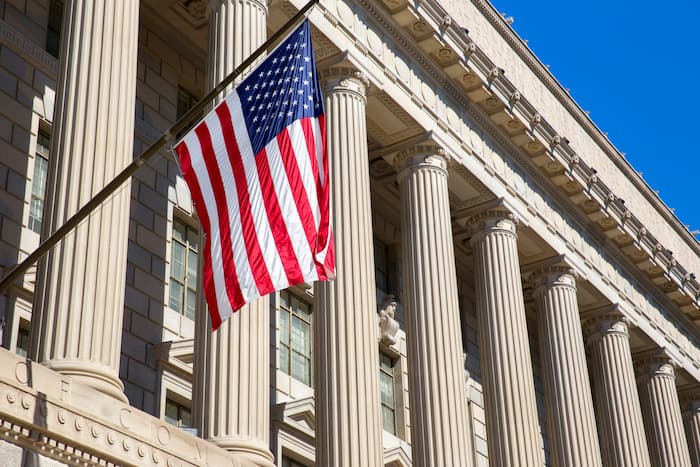As the new Trump administration continues a massive overhaul of the federal workforce, one of the most significant headlines has been the mass exodus of workers from the federal government—both voluntarily and through terminations and layoffs. According to an analysis by CNN, nearly 106,000 federal workers have involuntarily left since January, on top of more than 75,000 who took a buyout to leave.
As headcount reductions connected to slashed federal funding continue, it is creating a vast new talent pool of former federal workers that experts say could help address ongoing talent shortages in the public and private sectors.
Some employers are already taking notice. Pennsylvania Gov. Josh Shapiro (D), for instance, recently issued an executive order that allows applicants for state civil service jobs to equate federal government employment experience with Commonwealth government experience.
“Right now, Pennsylvania still has 540 critical jobs to fill,” Shapiro said in a statement, “and we have an opportunity to recruit federal workers and veterans who have significant experience and expertise in all of these fields because they’ve held these jobs already at the federal level or in the military.”
Among the employee value propositions that many former federal workers are looking for is a robust employee benefits package, says Don King, vice president of total HR benefits tech platform Businessolver.
Private employers, however, may need to contend with the perception that private employer benefits are subpar to federal government benefits. Federal benefits typically include access to both defined benefit and defined-contribution plans, subsidized health insurance for retirees and other outliers rarely found in private employment.
While the specific benefits offerings a private employer can extend to the workforce may differ from what former federal workers are used to, King says, organizations looking to leverage their benefits to capture this growing talent pool should think bigger picture.
“This is where we must take a step back and understand that there are fundamental philosophical differences in how the public versus private sector views total rewards,” he says. “More precisely, companies need to focus on the competitiveness, value and care that the benefits program is delivering to their people.”
What employees want from their benefits
Businessolver research, King says, shows the value that employees, including federal workers, place on their benefits, cited as a top-three reason workers join a new organization or stay at a current employer.
“The data overwhelmingly shows,” King says, “across all industries, employees want benefits that will help them manage their holistic wellbeing.”
To that end, King says, employers looking to attract former federal workers should revisit their benefits design to ensure their offerings speak to modern employee wellbeing needs—especially if they want to capture a share of younger employees exiting the federal government. Businessolver research has found that holistic wellbeing benefits—from mental health offerings to caregiving support and fitness programs—are preferred six times over by millennials and Gen Z, compared to Baby Boomers.
“While there are pronounced differences in benefit offerings between the public versus private sectors, it really comes down to understanding what today’s workers want out of their benefits and how their employer can meet them with empathy,” King says.
An empathetic workplace, according to those surveyed by Businessolver, prioritizes flexibility above all else.
“Employees want to be able to own their time and balance their life outside of work in ways that make sense for them,” King says.
Despite what he calls the “philosophical differences” about benefits structures between public and private entities, benefits packages designed with wellbeing truly at the core can help employers navigate those differences—and appeal to the notion that “all workers have similar expectations.”
“Sometimes, the answer to complex problems, like retaining good talent, is to just listen to your people and take care of them in the ways they want to be cared for,” King says.
Using tech to enhance the benefits experience
As employers strategize how to attract former federal workers, particularly through benefits, technology can play a critical role.
King notes that Businessolver research found that 86% of employees report being confused about their benefits—yet, more than three-quarters say that personalized decision tools that assist them during open enrollment give them more confidence in their benefits elections. Benefits personalization through technology is enabling employers to target “very specific, individualized employee needs,” he says, and connect the workforce with answers to benefits questions, such as through AI-powered chatbots, 24/7.
“We know that if we can deliver to employees in the moment of need or question,” King says, “they have the immediate ability to care for themselves, their families and maximize the enormous investment a company makes in their benefit programs.”
In addition, integrating AI and automation into the benefits delivery process is allowing employers to make “some headway” in confronting rising healthcare costs, he says. Businessolver clients, he notes, have leveraged decision-making support for an average of $3 million in premium savings.
“Ensuring a company has the right benefits technology to execute and deliver on a sound HR and employee benefits strategic plan,” he adds, “also means you are creating capacity within your teams to focus on truly the strategic work rather than the mundane administrative low-value tasks.”
Credit: Source link











